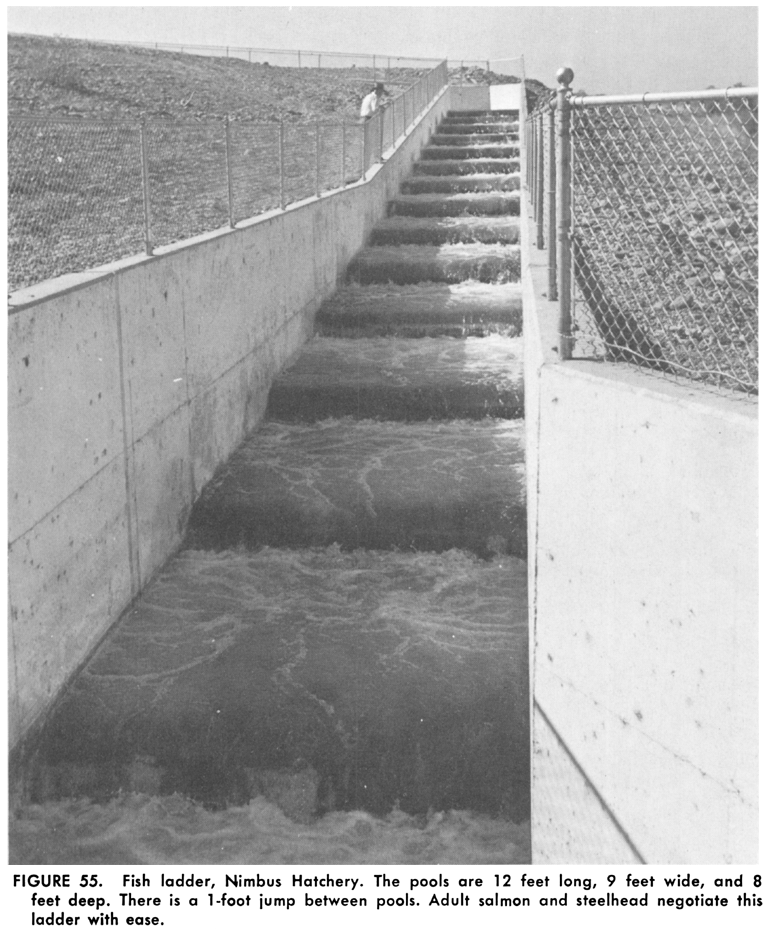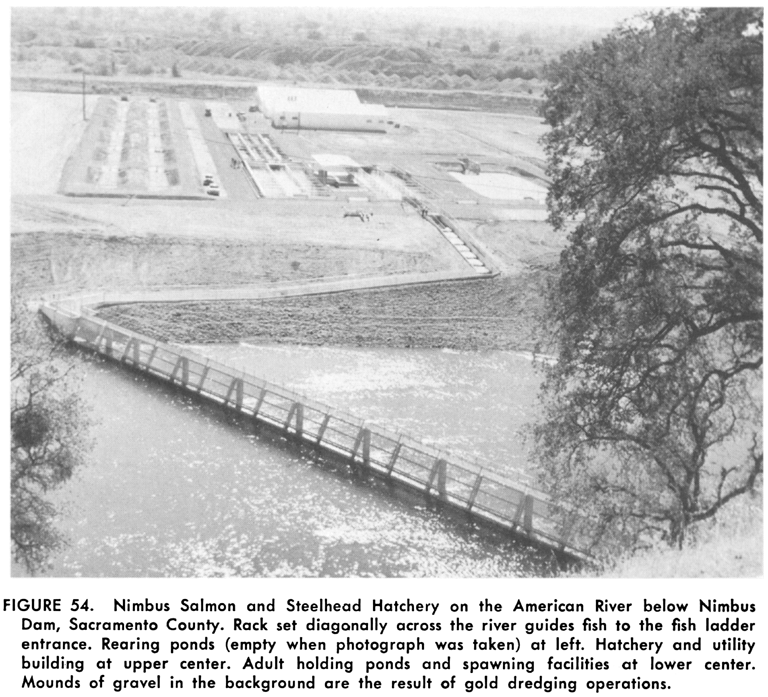At one time, the American River provided approximately 100 miles of stream in which salmon and steelhead could spawn and rear. When the Folsom-Nimbus project was completed in 1958, most of the spawning and rearing areas were cut off. Nimbus Hatchery was constructed to replace the salmon and steelhead runs that were blocked by Nimbus dam.
Annual CDFW counts of salmon spawning in the American River provided justification for construction of this hatchery.
In cooperation with CDFW and the U.S. Fish and Wildlife Service, the U.S. Bureau of Reclamation designed and built the hatchery, and currently pays CDFW to operate and maintain the facility.
The presence of this hatchery is an example of the multiple-use concept of water resource development. The primary purposes of the Folsom Dam project, of which Nimbus is an integral part, are flood control, municipal water supply, power generation and irrigation. In developing the American River for these important purposes, planners included Nimbus Hatchery to mitigate for project impacts on salmon and steelhead populations.
 Nimbus fish ladder circa 1955
Nimbus fish ladder circa 1955
 Nimbus weir and ladder circa 1955
Nimbus weir and ladder circa 1955
Nimbus Hatchery main page